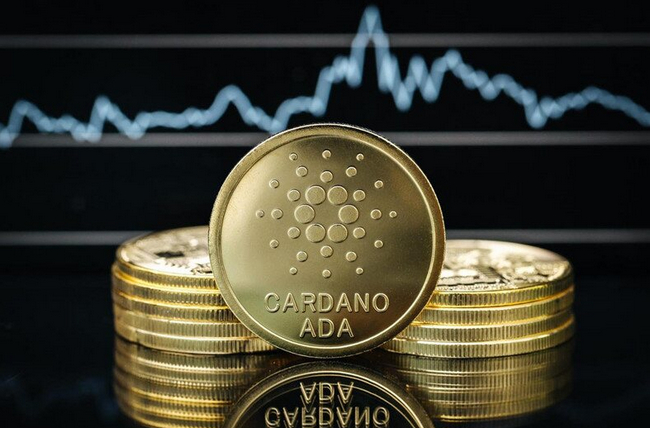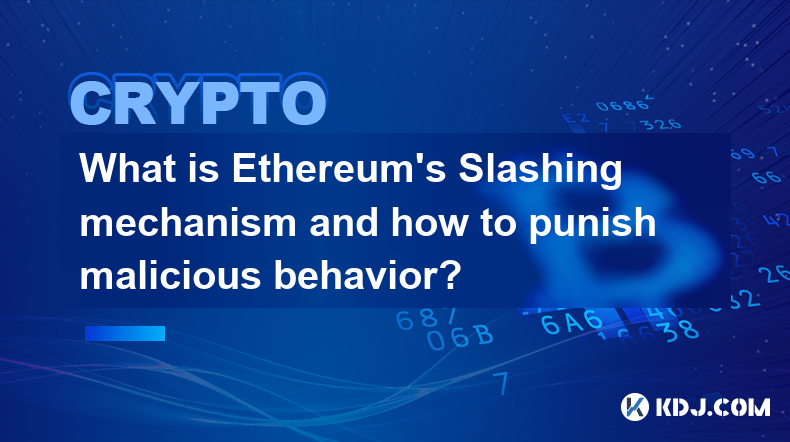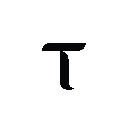-
 Bitcoin
Bitcoin $87,545.1219
3.45% -
 Ethereum
Ethereum $1,646.3284
3.45% -
 Tether USDt
Tether USDt $1.0000
0.00% -
 XRP
XRP $2.1348
3.49% -
 BNB
BNB $604.7726
1.77% -
 Solana
Solana $140.5021
0.93% -
 USDC
USDC $1.0000
0.00% -
 Dogecoin
Dogecoin $0.1623
3.77% -
 TRON
TRON $0.2449
0.84% -
 Cardano
Cardano $0.6469
3.87% -
 Chainlink
Chainlink $13.5861
3.80% -
 UNUS SED LEO
UNUS SED LEO $9.4556
1.35% -
 Avalanche
Avalanche $20.7131
5.22% -
 Stellar
Stellar $0.2598
6.49% -
 Toncoin
Toncoin $3.0448
2.46% -
 Shiba Inu
Shiba Inu $0.0...01268
3.21% -
 Sui
Sui $2.2732
7.10% -
 Hedera
Hedera $0.1736
6.15% -
 Bitcoin Cash
Bitcoin Cash $342.5799
2.42% -
 Polkadot
Polkadot $3.9508
2.11% -
 Litecoin
Litecoin $81.2563
6.32% -
 Hyperliquid
Hyperliquid $18.3746
3.12% -
 Bitget Token
Bitget Token $4.4978
0.24% -
 Dai
Dai $1.0000
0.00% -
 Ethena USDe
Ethena USDe $0.9992
0.00% -
 Pi
Pi $0.6383
1.50% -
 Monero
Monero $216.3140
1.01% -
 Uniswap
Uniswap $5.4716
4.19% -
 Pepe
Pepe $0.0...07865
6.20% -
 Aptos
Aptos $5.1991
6.34%
Detailed buying, selling and trading tutorial of ADA coin (illustration and text)
To buy ADA, first select and verify an account on a reputable cryptocurrency exchange, deposit funds, and place a buy order specifying the desired amount and price of ADA.
Oct 01, 2024 at 06:36 pm

ADA Coin Buying, Selling, and Trading Tutorial
Section 1: Buying ADA
- Choose a reputable cryptocurrency exchange: Research different exchanges that support ADA trading and select the one that meets your needs and security standards.
- Create an account: Register on the exchange by providing personal information and undergoing a verification process to ensure your identity.
- Fund your account: Deposit fiat currency (e.g., USD, EUR) or other cryptocurrencies into your exchange account to purchase ADA.
- Place a buy order: In the exchange's trading interface, navigate to the ADA/USDT or ADA/BTC trading pair. Enter the amount of ADA you want to buy and the desired price. Click "Buy" to place the order.
- Configure the order (optional): You can adjust the order settings to customize the execution criteria, such as order type (market or limit), time in force, and stop loss price.
Section 2: Selling ADA
- Navigate to the trading interface: Access the same trading pair you used to buy ADA.
- Place a sell order: Enter the amount of ADA you want to sell and the desired price. Click "Sell" to place the order.
- Configure the order (optional): Similarly, you can adjust the order settings as needed.
Section 3: Trading ADA
- Technical analysis: Study price charts and market data to identify trading opportunities based on technical indicators.
- Fundamental analysis: Consider news, developments, and market sentiment that may influence ADA's price.
- Place a leverage order (optional): Exchanges may offer leverage trading, which allows you to trade with borrowed funds to potentially magnify profits or losses. This is not recommended for beginners.
- Execute the trade: Enter the trading interface, select the ADA trading pair, and place a buy or sell order with desired order type, quantity, and settings.
Additional Tips:
- Use a hardware wallet: Consider storing your ADA in a hardware wallet for enhanced security.
- Monitor the market: Stay updated on cryptocurrency news and market trends to make informed trading decisions.
- Manage risk: Set stop loss orders and limits to manage potential losses.
- Educate yourself: Continuously research the cryptocurrency market and ADA's fundamentals to improve your decision-making.
Disclaimer:info@kdj.com
The information provided is not trading advice. kdj.com does not assume any responsibility for any investments made based on the information provided in this article. Cryptocurrencies are highly volatile and it is highly recommended that you invest with caution after thorough research!
If you believe that the content used on this website infringes your copyright, please contact us immediately (info@kdj.com) and we will delete it promptly.
- Remittix (RTX) Rips It in Presale Action As Investors Await the Next Market Movements
- 2025-04-21 17:00:12
- 9 Rare Coins That Could Make You a Millionaire
- 2025-04-21 17:00:12
- Voxies (VOXEL) Token Price Soars 200% After Bitget (BITGET) Bot Glitch Allows Users to Scoop Free Money
- 2025-04-21 16:55:12
- Despite Growing Frenzy Over XRP ETFs, BlackRock Remains Silent
- 2025-04-21 16:55:12
- Sui [SUI]'s Ecosystem Continues to Gain Impressive Traction, Total Accounts Soar Past 150 Million
- 2025-04-21 16:50:13
- Coins Worth Millions
- 2025-04-21 16:50:13
Related knowledge

What is Ethereum’s Slashing mechanism and how to punish malicious behavior?
Feb 20,2025 at 03:08am
Key PointsOverview of slashingDifferent types of slashing in EthereumIncentives and consequences of slashingIdentifying and reporting slashed validatorsOngoing discussions and potential improvementsEthereum's Slashing Mechanism: Punishing Malicious BehaviorEthereum's slashing mechanism is an essential tool for ensuring network security and punishing mal...

What is the verifier node of Ethereum and how to become a verifier?
Feb 19,2025 at 06:00pm
The Verifier Node of Ethereum: A Comprehensive GuideKey Points:What is a Verifier Node?How to Become a Verifier NodeResponsibilities and Rewards of a Verifier NodeMinimum Requirements for Becoming a Verifier NodePotential Difficulties in Running a Verifier Node1. What is a Verifier Node?A Verifier Node is an independent entity on the Ethereum network th...

What is Ethereum’s staking, and how to participate and earn money?
Feb 19,2025 at 04:37pm
Key Points:Understanding Ethereum's Staking MechanismSteps to Participate in StakingBenefits and Rewards of StakingSecurity and Risk ConsiderationsTechnical Requirements and Hardware OptionsPotential Challenges and Troubleshooting TipsFAQs on Ethereum StakingWhat is Ethereum's Staking?Proof-of-Stake (PoS) is a consensus mechanism used in blockchain netw...

What is Ethereum’s DAO (Decentralized Autonomous Organization) and how does it work?
Feb 20,2025 at 03:12am
Key PointsDefinition and Structure of a DAOGovernance and Decision-Making in DAOsBenefits and Use Cases of DAOsChallenges and Limitations of DAOsWhat is Ethereum's DAO (Decentralized Autonomous Organization) and How Does It Work?Definition and Structure of a DAOA Decentralized Autonomous Organization (DAO) is an innovative governance and management fram...

What is Ethereum's multi-signature wallet and how to improve security?
Feb 20,2025 at 02:18pm
Key Points:Understanding the Concept of a Multi-Signature WalletBenefits and Drawbacks of Multisig WalletsRequirements for Setting Up a Multisig WalletStep-by-Step Guide to Generating a Multisig WalletImplementing Strategies for Enhanced Security1. Understanding the Concept of a Multi-Signature WalletA multi-signature (multisig) wallet in the Ethereum e...

What is Ethereum's oracle and how to provide data for smart contracts?
Feb 21,2025 at 01:30am
Key Points:Understanding the concept of oracles in EthereumExploring different types of oraclesDetailed guide on how to provide data for smart contractsAddressing potential challenges and considerationsWhat is Ethereum's Oracle?Oracles are crucial components in the Ethereum ecosystem, enabling smart contracts to access real-world data and off-chain even...

What is Ethereum’s Slashing mechanism and how to punish malicious behavior?
Feb 20,2025 at 03:08am
Key PointsOverview of slashingDifferent types of slashing in EthereumIncentives and consequences of slashingIdentifying and reporting slashed validatorsOngoing discussions and potential improvementsEthereum's Slashing Mechanism: Punishing Malicious BehaviorEthereum's slashing mechanism is an essential tool for ensuring network security and punishing mal...

What is the verifier node of Ethereum and how to become a verifier?
Feb 19,2025 at 06:00pm
The Verifier Node of Ethereum: A Comprehensive GuideKey Points:What is a Verifier Node?How to Become a Verifier NodeResponsibilities and Rewards of a Verifier NodeMinimum Requirements for Becoming a Verifier NodePotential Difficulties in Running a Verifier Node1. What is a Verifier Node?A Verifier Node is an independent entity on the Ethereum network th...

What is Ethereum’s staking, and how to participate and earn money?
Feb 19,2025 at 04:37pm
Key Points:Understanding Ethereum's Staking MechanismSteps to Participate in StakingBenefits and Rewards of StakingSecurity and Risk ConsiderationsTechnical Requirements and Hardware OptionsPotential Challenges and Troubleshooting TipsFAQs on Ethereum StakingWhat is Ethereum's Staking?Proof-of-Stake (PoS) is a consensus mechanism used in blockchain netw...

What is Ethereum’s DAO (Decentralized Autonomous Organization) and how does it work?
Feb 20,2025 at 03:12am
Key PointsDefinition and Structure of a DAOGovernance and Decision-Making in DAOsBenefits and Use Cases of DAOsChallenges and Limitations of DAOsWhat is Ethereum's DAO (Decentralized Autonomous Organization) and How Does It Work?Definition and Structure of a DAOA Decentralized Autonomous Organization (DAO) is an innovative governance and management fram...

What is Ethereum's multi-signature wallet and how to improve security?
Feb 20,2025 at 02:18pm
Key Points:Understanding the Concept of a Multi-Signature WalletBenefits and Drawbacks of Multisig WalletsRequirements for Setting Up a Multisig WalletStep-by-Step Guide to Generating a Multisig WalletImplementing Strategies for Enhanced Security1. Understanding the Concept of a Multi-Signature WalletA multi-signature (multisig) wallet in the Ethereum e...

What is Ethereum's oracle and how to provide data for smart contracts?
Feb 21,2025 at 01:30am
Key Points:Understanding the concept of oracles in EthereumExploring different types of oraclesDetailed guide on how to provide data for smart contractsAddressing potential challenges and considerationsWhat is Ethereum's Oracle?Oracles are crucial components in the Ethereum ecosystem, enabling smart contracts to access real-world data and off-chain even...
See all articles






















































































